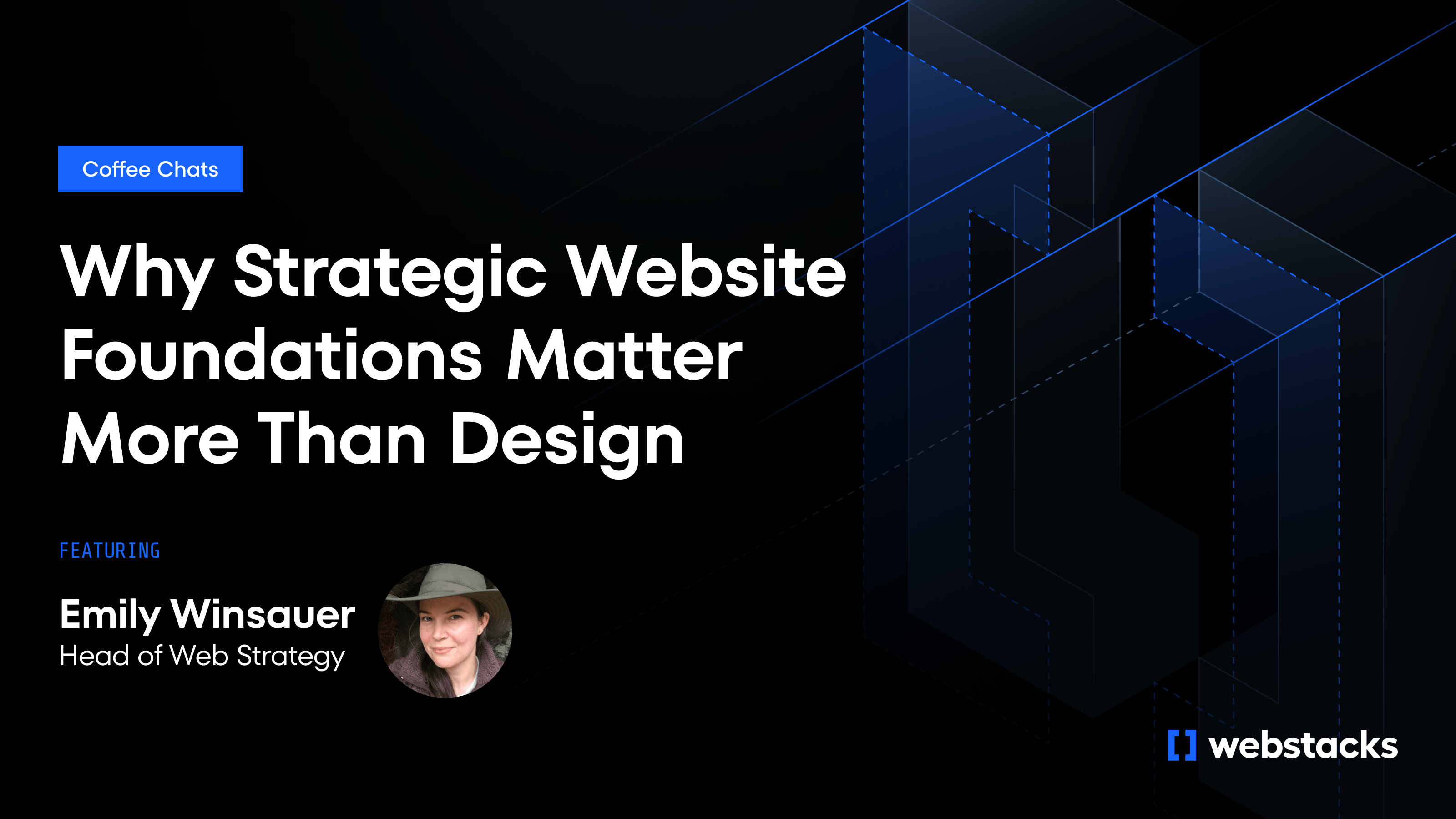Webstacks sees websites as the backbone of a company’s digital infrastructure; a platform that should empower your marketing team and deliver performance from day one.
For business leaders and marketing executives, understanding website redesign timelines is key for effective resource allocation and project planning. While a professional website overhaul can take anywhere from 6 weeks to 6 months, the scope varies significantly based on your organization's needs and complexity.
In this guide, we’ll break down the key factors that impact timelines, walk through real use cases, and show how Webstacks helps teams like yours launch faster without sacrificing strategy or scalability.

What Factors Influence Website Redesign Timelines?
No two website redesigns follow the same path and the timeline can shift dramatically depending on your goals, internal resources, and technical complexity.
For B2B companies, especially those with cross-functional teams and multiple stakeholders, understanding these variables early can help avoid bottlenecks later.
1. Project Scope: MVP or Full Redesign?
A marketing-focused MVP (minimum viable product) can often go live in 6–8 weeks. But if you’re reworking site architecture, integrating a new CMS, and rolling out a rebrand, you’re looking at a more extensive timeline.
For example, a Series B SaaS brand launching a new product line may need to realign navigation, update content models, and deploy a refreshed design system.
2. Internal Alignment and Stakeholder Reviews
More stakeholders usually mean more feedback loops. Delays often come from reviews, legal bottlenecks, or misaligned decision-makers, not the dev work itself. Assigning clear roles and approval checkpoints early is important for managing website redesign projects.
3. CMS and Tech Stack Transitions
Choosing to migrate to a headless CMS like Contentful or Sanity may extend the build phase, but it sets your team up for long-term speed and agility. We often recommend tech stack transitions as part of a strategic redesign.
For example, we helped iTrustCapital migrate from WordPress to Contentful.
4. Content Readiness
One of the most common blockers is content. Even the best component library won’t launch itself. We recommend building content strategy in parallel with design and development, especially for larger sites.
5. Compliance, Accessibility, and Performance
Enterprise teams often need legal reviews, WCAG audits, and performance QA. These are essential but time-consuming layers that should be scoped into the project from the start.
3 Realistic Timelines for B2B Website Redesigns
Timelines should reflect your business priorities. Below are benchmarks based on Webstacks’ experience across hundreds of B2B redesigns.
6–8 Weeks
Great for startups or campaign-driven teams. This typically includes 5–10 key pages, refined UX, and a lightweight modular system, all built on a flexible CMS for fast iteration.
An example would be a startup with limited in-house resources that needs to launch landing pages quickly and pivot messaging often.
2–3 Months
Ideal for growing teams ready to scale out of rigid templates. In up to three months, you can transition to a headless CMS, migrate content, and build a modular design system.
4–6 Months
Enterprise sites often require 30+ pages, localization support, and governance controls for multiple stakeholders.
A good example would be an enterprise company consolidating multiple brands into a single platform while meeting accessibility and compliance standards.

What Slows Down or Speeds Up a Redesign?
Redesigns succeed or stall based on how well the process is managed across teams.
Some common factors can either slow down or accelerate the project.
One major slowdown is stakeholder indecision.
Without clear alignment on who owns the project and how feedback is managed, review cycles can stretch indefinitely.
Content delays also push timelines off track—designs may be ready, but if copywriting lags behind, the entire launch is held up.
Rigid tech stacks add further complications. Legacy CMS platforms limit flexibility, making even small changes require developer involvement.
Finally, a lack of defined KPIs leaves teams without a clear sense of what success looks like, causing redesigns to drift without a focused direction.
What speeds up a redesign is a component-based approach, where reusable design elements are built once and deployed across multiple pages or sections. This cuts down on development time and allows for faster updates.
Using a composable architecture, such as pairing a headless CMS with modern frameworks like Next.js, also accelerates iteration by separating content from presentation. Lastly, adopting an MVP-first mindset—focusing on launching a lean version of the site quickly and optimizing based on real user data—helps teams avoid long delays and keep momentum.
Webstacks’ Redesign Approach
Webstacks can build and ship websites faster than the typical agency because our redesigns include modular systems, composable tech stacks, and an MVP-first delivery model. This enables your team to move faster, publish independently, and scale with confidence.
In addition:
- Our modular components are built for flexibility and consistency.
- Our stack uses best-in-class tools like Contentful, Sanity, and Vercel.
- We launch fast then iterate based on user data, internal needs, and campaign cycles.
Our results are impressive:
- 60+ B2B websites launched since 2020
- 92+ average Lighthouse score at launch
- Trusted by Calendly, ServiceTitan, Snowflake, and more
Website Redesign Timelines FAQs for B2B Teams
Can We Launch in Under 3 Months?
Yes. With a focused scope and MVP strategy, many teams go live in 6–10 weeks.
Do We Need to Change Our CMS?
Not always. But if publishing is painful, a headless CMS might be your best upgrade.
How Involved Will Our Team Be?
We collaborate with stakeholders during strategy and reviews, but take the lead on execution.
Can We Redesign in Phases?
Definitely. Phased rollouts reduce risk and get wins to market faster.
Map the Right Timeline to Your Goals
A website redesign is a chance to build the digital foundation your marketing team needs to scale without friction.
Whether you’re launching a quick MVP in 6–8 weeks or rolling out a scalable redesign over several months, the real question isn’t how long should it take. But what should your redesign enable?
Webstacks’ team of web developers and designers help teams launch sites built on modular design systems, composable stacks, and agile workflows. Sites that:
- Empower marketers to publish independently
- Support better SEO, faster performance, and higher conversions
- Scale with your brand as you grow
We’ll help you map the right timeline based on your team, goals, and tech stack.




